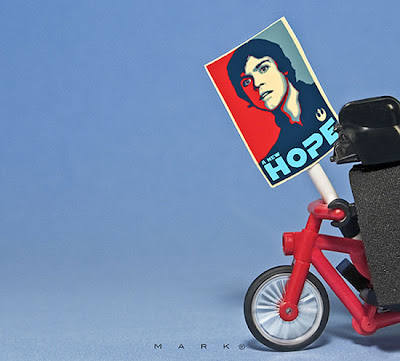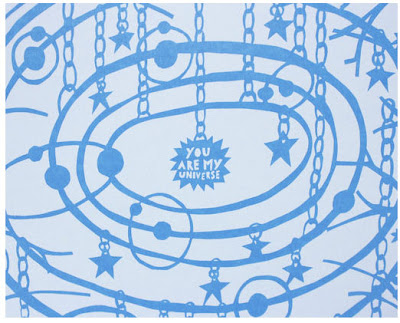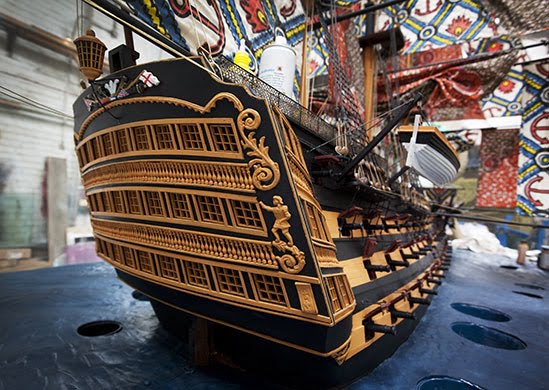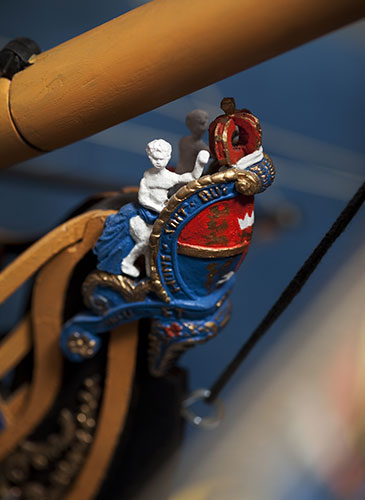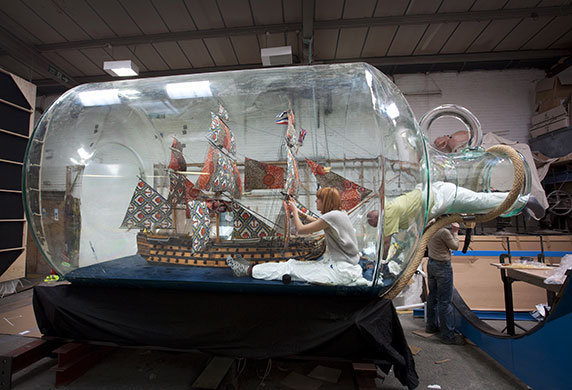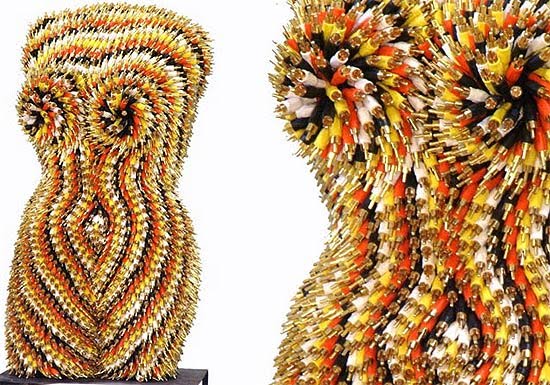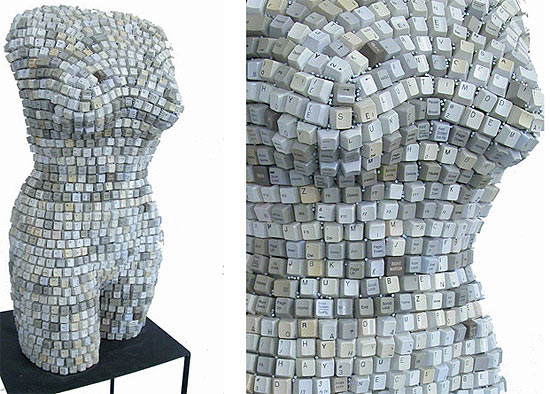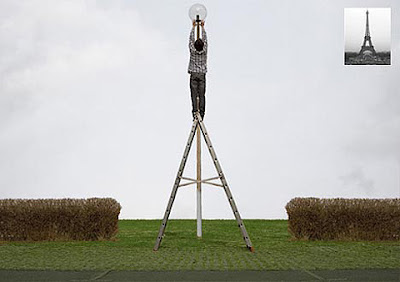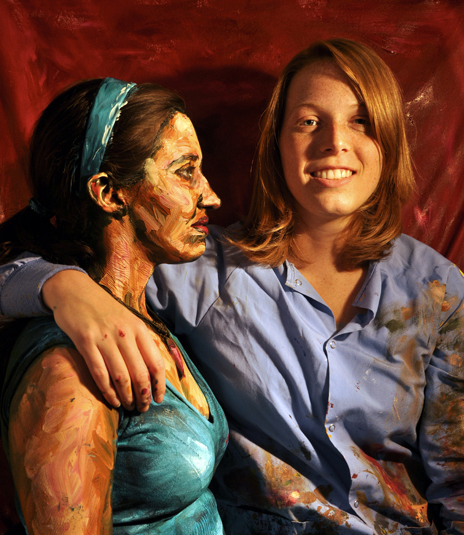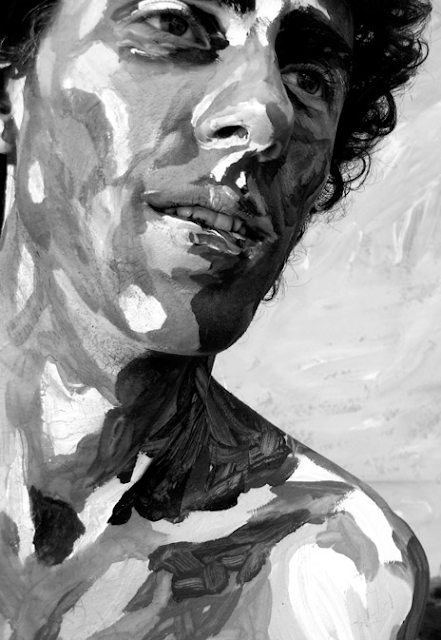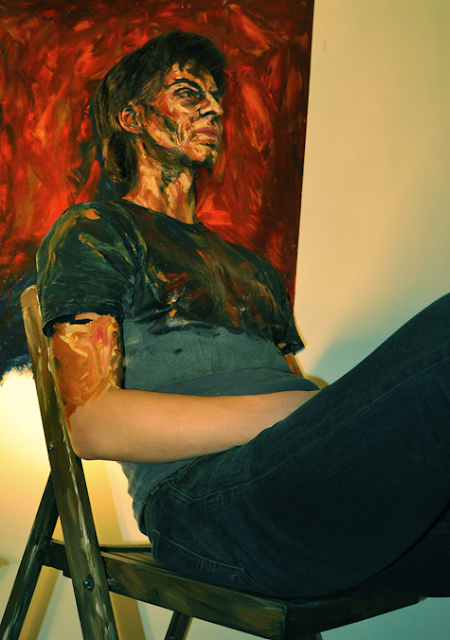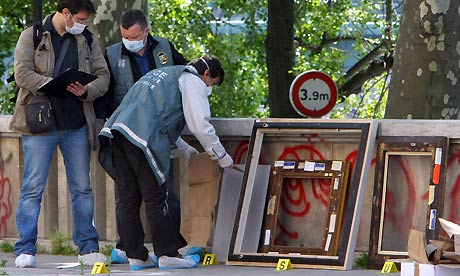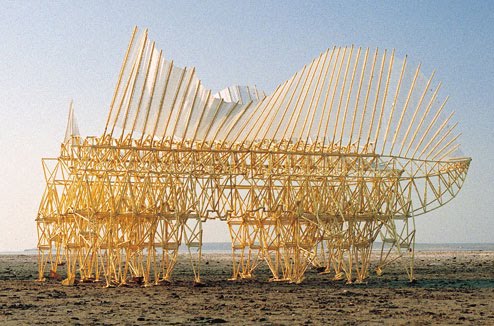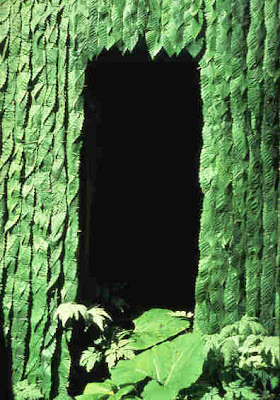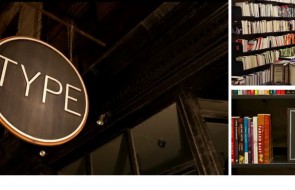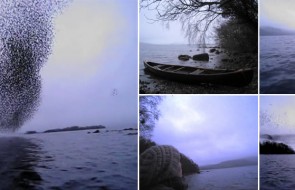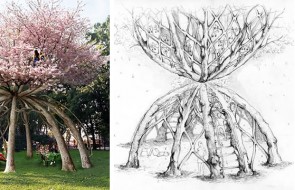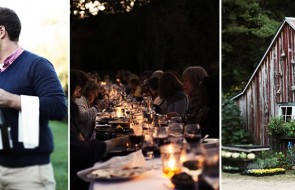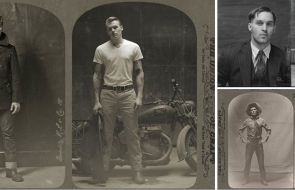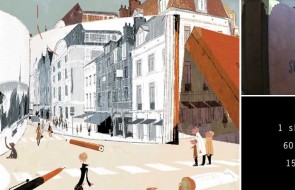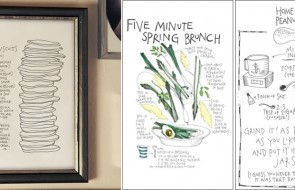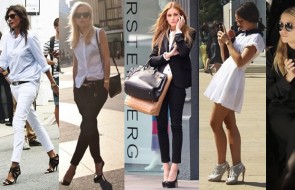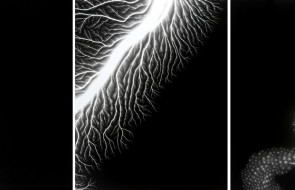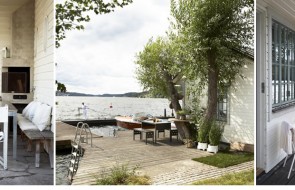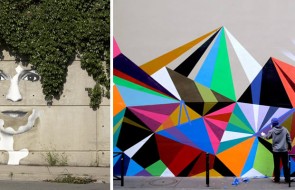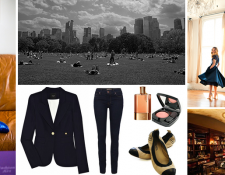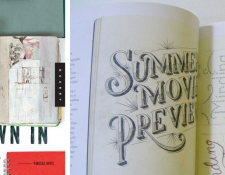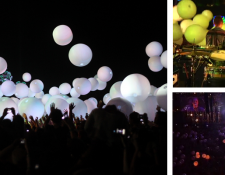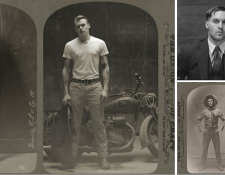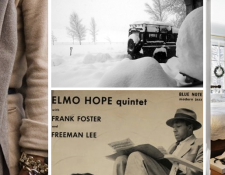Arts Visuels
Always love stop-motion animation. And when it meets street art, well, it’s pretty cool.
Arts Visuels
This Argentine artist, who goes by the moniker “Marker,” uses only toys as his models, and brings them to life in hilarious ways…
Marker’s website, The Secret Life of Toys,
here.
Arts Visuels
Artist Rob Ryan, who I featured a while ago back
here, has a new limited edition print available through the
Tate Shop.
100 of them, signed, here at the Tate Shop.
See previous post for more work and his book (which I’m still dying to see!).
via Curated.
Arts Visuels
Trafalgar Square’s Fourth Plinth, one of Britain’s most popular contemporary art display spaces, just received a new installation– the largest ship in a bottle ever made.
Though it may look kitschy due to the fact that, well, it’s a ship in a bottle, the ship itself is actually a fully to-scale (1/30) model of Nelson’s ship Victory, which is the ship Nelson died on in the battle of Trafalgar. So perhaps it is equal parts monument and kitsch– a fitting combination for a contemporary art piece.
Click through for the rest of the post and more images…
The opening of the bottle was large enough for artist Shinka Yonibare’s studio assistants to climb inside to work on it…
Details of the original are faithfully replicated, from the paint colors to the 80 cannons, to the 37 sails, with 31 of the 37 sails set, just as they were on the day of the battle.
Even the same materials are used– oak, rope, brass, canvas, etc. The only area in which the artist, who is British-Nigerian, has taken liberty are the sails, which he has printed with African batik patterns– a tactic he regularly engages in his art to subvert Western icons.
See the full article in the Guardian
here.
Arts Visuels
Artist Federico Uribe reimagines the torso, a classical art staple, simply by switching up the medium. It’s amazing how the medium not only changes the visual effect, but also the connotations of the form.
Whether intentional or not, it’s difficult not to imagine what a female form made of bullets, or locks, or lips, might mean…
Click through for more images…

Arts Visuels
In Markus Georg’s new exhibit, “The Power of Images”, he uses highly straightforward, even banal-looking images to remind the viewer of, ironically, the power of the imagination.
In his artist’s statement, he proposes that imagination is a forgotten currency in our highly empirical world, and that he wants these pieces to “resocialize imagination,” which he says is “a fundamental prerequisite for both producing art and its reception.”
Hence, out of highly ordinary materials, which appear at first to be nothing more than exactly what they are, he creates motifs that are just familiar enough to trigger some level of recognition, but not quite literal enough to be understood without the employment of one’s imagination.
Arts Visuels
Did you think this was a painting? This is actually a photograph of a person covered in paint…
From the early Renaissance until the beginnings of Impressionism, the goal of art, and in particular painting, was to imitate life. The emphasis, subject matter, and techniques varied over time, but the general idea was to present a naturalistic, believable view of the world on a two-dimensional surface. Then Impressionism hit, and everything changed, kicking off Modern art movements that routinely rejected the goal of presenting real life on a flat surface.
Now, along comes Alexa Meade, who actually takes real life– ie, real people– and paints literally directly on top it, turning the 3-d, real life subjects into a 2-dimensional-looking “representations” of the actual people. Her medium is acryclic and flesh.
Then, she photographs them, making the ultimate medium photography… that looks like a painting… of a person… that is actually a photograph of a painted person.
Click the jump for lots more work from Alexa Meade…
Sometimes she paints the surroundings as well, like this in this scenario.
Meade’s work at its most basic already combines performance, painting, and art, and in pieces like the above, where she paints found objects as well and creates a whole scene, she also incorporates mixed media and installation.
And sometimes, the subject is the only painted element in the scene…
I wondered at first if this one was a black and white photo of a person she’d painted in color. But no… although both scenarios are interesting. Painting a person in black and white paint is a great concept, as would be changing the representation of the person by photographing them in black and white even if she’d painted them in color. Then the photographic record would in some way be a false account of the “performance” part.
Alexa Meade website
here.
Alexa Meade flickr with more work
here.
Meade is blowing up! Her work will be shown at art world giant
Saatchi in London in the fall…
Arts Visuels
I feel like as an art and art history lover, I should find these kinds of heists offensive and sad, but I can’t help myself. I’m intrigued by them, and particularly by the theories as to the motive for the heist. It’s commonly known that it’s very difficult to sell stolen works of art, especially ones so famous, which always leads to the theory that the heist was sponsored by a private collector, and the idea that someone would be so in love with certain pieces of art as to have them stolen solely to allow unlimited viewing, is somehow romantic, no?
The £100 million modern art heist
A single masked raider has carried out “one of the biggest thefts in art history” during a dawn heist at a Paris gallery in which he stole works worth hundreds of millions of pounds.
By Peter Allen, in Paris, and Stephen Adams
Published: 7:24PM BST 20 May 2010
Click through for the article from the Telegraph and images of the stolen pieces…
The theft saw the man breaking into the city’s Museum of Modern Art and stealing five paintings, including works by Picasso and Matisse.
Staff at the museum were today being questioned by detectives who fear that the criminal may have had “people on the inside helping him”.
There were three security guards in the building at the time, but each has told detectives that they saw nothing.
CCTV footage caught the “heavily disguised, burly figure” jumping through a smashed window at around 6.50am.
He is then believed to have a forced a high security lock to gain access to the most valuable works in the building, which is across the Seine River from the Eiffel Tower.
The canvases are then thought to have been cut from their frames and taken away in a single bundle.
“It’s an enormous crime, one of the biggest in art history,” said a source close to the inquiry, who estimated that the five stolen paintings were worth at €500 million (£430 million).
That figure was later played down by Christophe Girard, deputy culture secretary at Paris City Hall, who suggested they were worth “just under €100 million (£86m).
Police and museum staff were yesterday left examining the empty frames as they began the hunt for the raider.
The paintings, which date from 1906 to 1922, represent some of the most important works of the early 20th century, said art experts.
The haul comprised Pigeon with Green Peas by Pablo Picasso (1912); Pastoral by Henri Matisse (1905/6); The Olive Tree near Estaque by Georges Braque (1906); The Woman with the Fan by Amedeo Modigliani (1919); and Still Life with Chandeliers by Fernand Leger (1922).
Bertrand Delanoe, the mayor of Paris, called the theft “an intolerable attack on Paris’s universal cultural heritage”.
The Picasso was itself bequeathed in 1953 by Dr Maurice Girardin, whose legacy helped establish the museum itself.
The raid could find a place in history as one of the most famous of all time. The biggest art theft until now was a raid on the Isabella Steward Gardner Museum in Boston in 1990 in which 13 works of art worth $500 million were taken. The case remains unsolved.
Other significant thefts include the 1911 theft of the Mona Lisa at the nearby Louvre. Italian immigrant Vincenzo Perugia hid in the museum overnight before getting away with the priceless painting by Leonardo da Vinci. It was finally returned in 1914.
In 1961 an unemployed lorry driver stole Goya’s portrait of the Duke of Wellington from the National Gallery in London. Kempton Bunton later admitted walking into the gallery and then leaving with the massively expensive work under his arm.
Tim Marlow, the art historian, who presents for SkyArts, said last night: “These are works by the greatest figures of early 20th century art.
“That’s irrefutable. You’ve got to say that this thief has good taste – he knew what he was taking.”
Theories about why they were taken – for example whether they were stolen to order – have set the art world abuzz.
Despite the thief’s success in stealing the paintings, art insurance professionals said he faced a harder task in selling them on.
Viscount Charles Dupplin, of Hiscox insurance, said he thought the thief – or thieves – were “almost certainly enthusiastic amateurs” who had decided to launch the raid after “getting excited” about recent high prices for Picassos and other works.
“I would have thought these people are congratulating themselves on stealing some fantastic things, but are now scratching their heads about how to turn them into cash,” he said.
“There are not a lot of rich South Americans who want to buy such paintings on the black market.”
Consequently he thought they would eventually be returned, “but we are talking about years”.
But Anotonia Kimbell, of the Art Loss Register, said there were other ways to make money from them.
“They could attempt extortion with a so-called ‘finder’s fee’,” she said.
Arts Visuels
You MUST watch this video. It’s very short, and it will add a lot of wonderment to your day. I’m enthralled.
Theo Jansen explores the boundaries between art and engineering, creating these “kinetic sculptures.”
These “animals” move. Or I should say, they walk. They’re wind-powered. It’s amazing. They look like a cross between an exoskeleton and an erector set, which is basically what they are, and then they start moving and they become so anthropomorphic, you wonder if they’re alive in some way.
Many of his creatures are so “evolved” that they are now capable of “living” on the beaches on their won– the wind powers their “walking,” and they have sensors that tell them to stop and turn around when they hit either water or dry sand, keeping them permanently on the wet sand.
They even have sensors that tell them when a storm is coming, and their “brain” tells them to start pounding a stake into the ground so they don’t fall over in the storm.
Can you imagine having a brain that dreamed up stuff like this?
In the video above, you see the “rhinoceros”-like sculpture walking.
If you want to learn even more about Jansen and his work, click here for a ten minute video presentation by Jansen that shows more animals walking and an explanation of how they work.
It’s also extremely interesting to hear how he talks about the animals– he doesn’t discuss them as art, or really as machines or product prototypes either– he talks about them as though they are animals that he is looking after, and he doesn’t seem to feel any need to explain the “purpose” of them, which I think is an amazing insight into the brain of someone this creative.
I think that science and art are going to continue to merge in this way, in the minds of people like Jansen who are capable of seeing their relation to each other, and have a desire to explore their intersection without the desire to make a practical product or advancement in technology. While in art, it seems sometimes that “we’ve seen it all,” and there’s nothing new under the sun, science is continually evolving and pushing boundaries in material ways, and through the integration of science and art, art could do the same.
Arts Visuels
Like Andy Goldsworthy, the artists taking part in Arte Sella create their works on site using materials from the area, which in this case happens to be a forest outside of Padua, Italy.
However, unlike Andy Goldsworthy’s art, and most earth art really, where all you see as the viewer are the resulting photographs of the work, with Arte Sella, all of the artists are brought to one location to create their pieces, so you get to wander the forest and see the works in the environment where they were created. Pretty cool concept.
One of my favorite experiences ever was the Venice Biennale, for the adventure of wandering the city and the gardens, in and out of buildings, looking at art, and I think this would be a similar experience– except in the woods, and with art created from and for the woods.
Not to say that one would be better than the other, but just another experience in any way like the Venice Biennale is definitely on my list of things to do.




